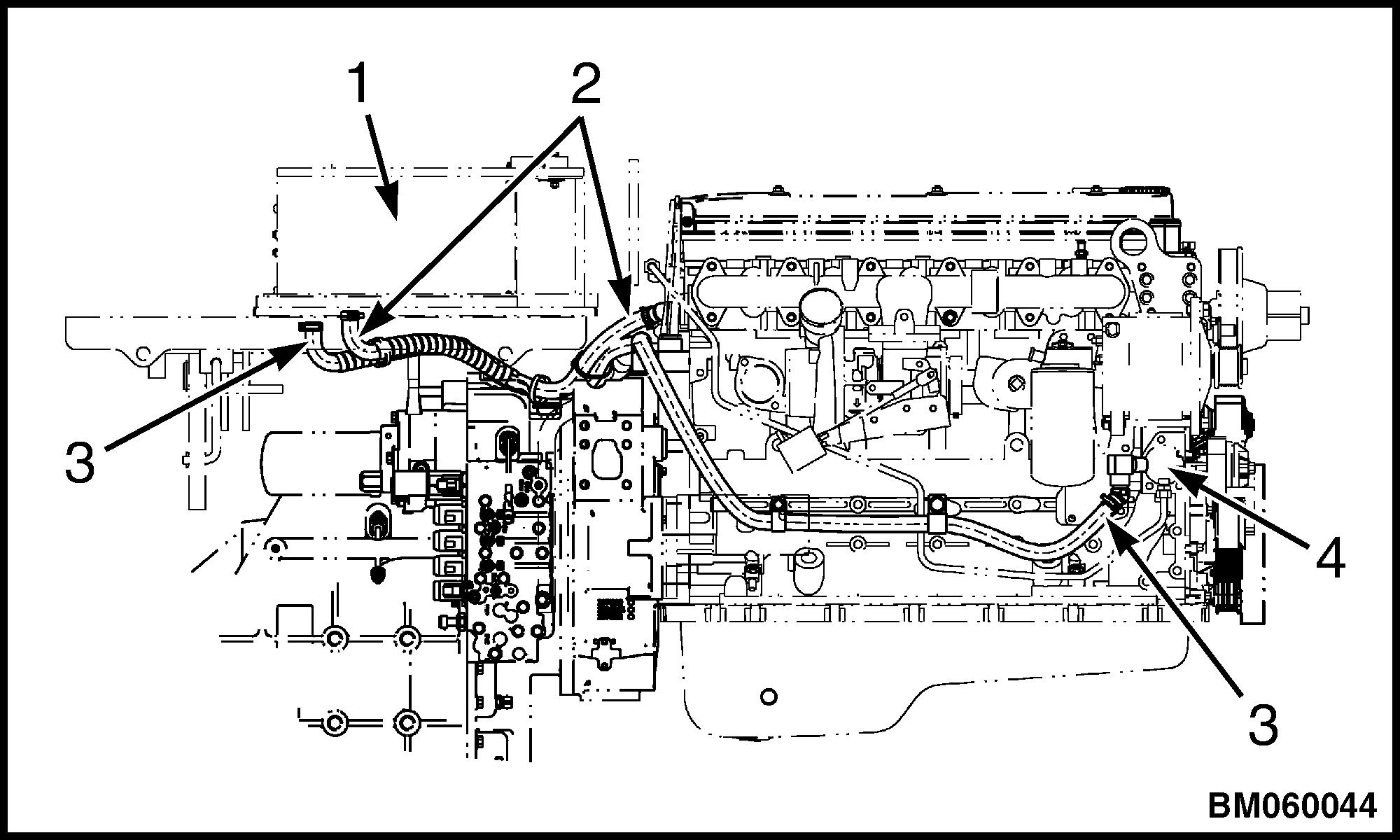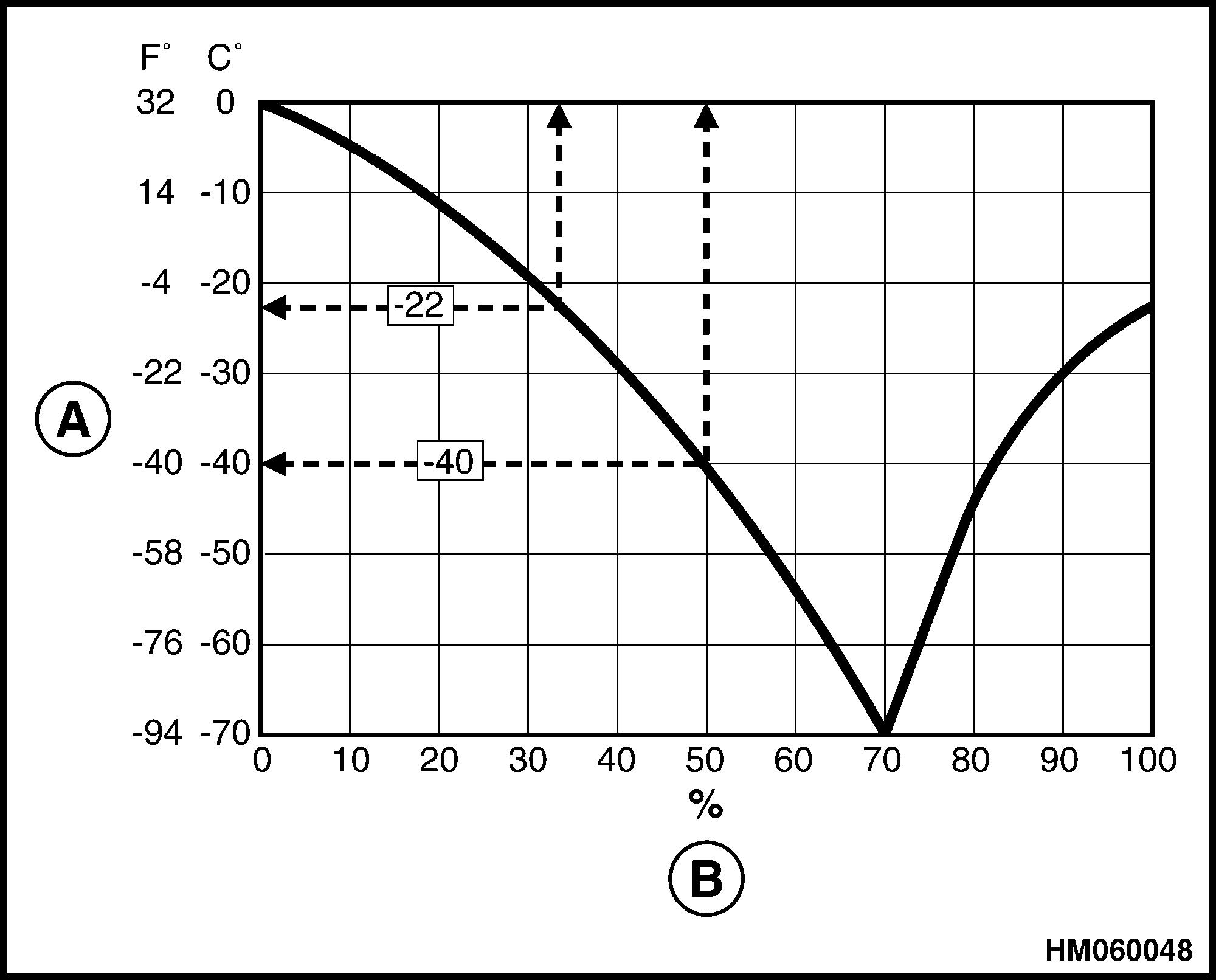
2 minute read
Coolant
from Hyster K007 (H190HD2, H210HD2, H230HD2, H230HDS2, H250HD2, H280HD2) Forklift Service Repair Manual
by amanda
1. CAB HEATER 2. HOT COOLANT HOSE (TOWARDS HEATER) 3. COLD COOLANT HOSE (FROM HEATER) 4. ENGINE COOLANT INLET
Figure 5. Cab Heater
Advertisement
Coolant
Coolant is a mixture of water (48%), ethylene glycol (48%), and some additives (4%). Water is a fluid with the highest heat capacity and the lowest cost. However, water has only limited thermal usage and tends to enhance corrosion.
This limited thermal usage is extended by the addition of ethylene glycol. The tendency to enhance corrosion is suppressed by additives. These additives are not available for replenishment. This implies that the entire coolant system has to be drained and refilled when the additives are depleted. Water and/or ethylene glycol can be added separately to correct their relative contents.
Ethylene Glycol
The mixing ratio of water and ethylene glycol for optimum thermal capacity and boiling point elevation is normally 50/50. Other mixing ratios influence the freezing point, boiling point and fluidity of the mixtures. See Figure 6. Higher concentrations of ethylene glycol reduce fluidity and heat capacity, but raise the boiling point. Operation of the lift truck in arctic conditions justifies ethylene glycol contents of 50% or more. See Figure 6. Ethylene glycol content can be established with a portable refractometer. This content can be raised by adding pure ethylene glycol or can be lowered by adding distilled water to the cooling system. Ethylene glycol degrades over time, but degrades more rapidly with a pH below 7.0. When ethylene glycol degrades, acidic components are formed, which rapidly lower the pH. Additives in the coolant compensate for the negative effects of degrading ethylene glycol. Remark: pH is a measure of acidity or alkalinity. A pH lower than 7.0 indicates an acidic environment, which promotes corrosion. A pH higher than 7.0 indicates an alkaline or basic environment, which reduces corrosion.

A. FREEZE POINT TEMPERATURE B. PERCENTAGE OF ETHYLENE GLYCOL IN
COOLANT
Figure 6. Coolant Mixture Ratios
Water
The water quality requirement for coolant is distilled or deionized water, with little or no minerals. Minerals increase corrosion, form deposits and deplete some of the additives. If distilled or deionized water is not available, test strips must be used to establish the water quality. For limiting values, see Table 1.
Table 1. Limiting Values
Total Solids Total Hardness (CaCO3, MgCO3) Chloride (Cl) Sulfate (SO4) 340 ppm maximum 170 ppm maximum
40 ppm maximum 100 ppm maximum



